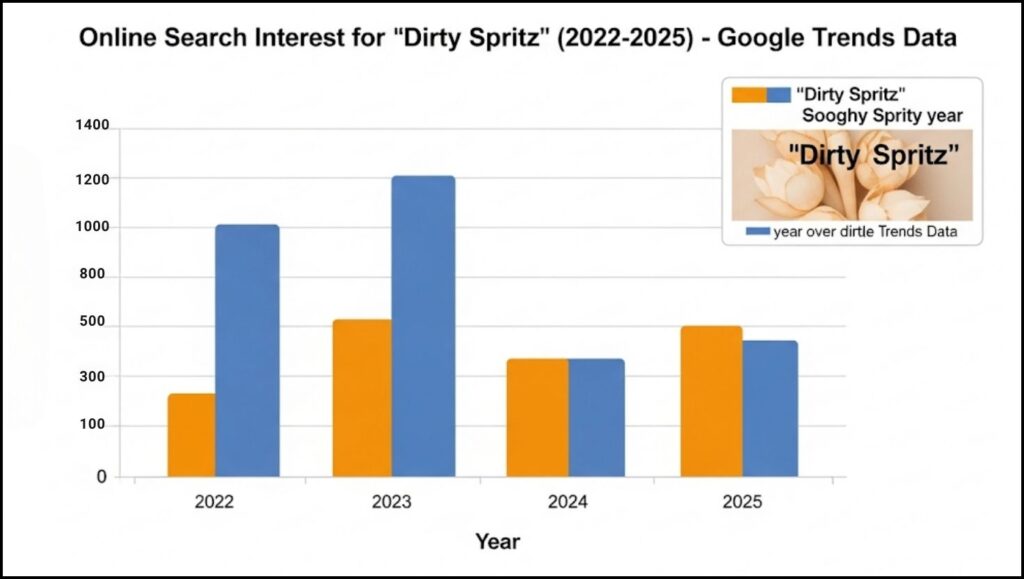
A new and unexpected drink, the Dirty Spritz, is making its way from high-end cocktail bars to casual outdoor gatherings, challenging the dominance of traditional aperitivos. This variation of the classic spritz, which adds a savory element of olive brine, signals a shift in consumer tastes toward more complex and umami-driven flavor profiles. Bartenders and industry experts note the trend reflects a broader appreciation for bolder, less-sweet beverages.
A Savory Twist on a Summer Classic
The classic spritz, with its combination of Prosecco, a bitter liqueur like Aperol or Campari, and soda water, has long been a fixture of summer. Its refreshing, bittersweet profile has made it a global favorite. The dirty spritz, however, introduces a new dimension. By incorporating a small amount of olive brine—the same briny solution used in a dirty martini—the drink gains a salty, savory note that cuts through the sweetness and bitterness. This simple addition transforms the cocktail into something more complex and assertive.
“We’ve seen a clear demand for drinks that move beyond the purely sweet or fruity,” said Sarah Thompson, a beverage consultant based in New York. “The dirty spritz taps into the same psychological space as a dirty martini—it’s sophisticated, slightly unexpected, and makes a bold statement. It’s an evolution, not a revolution, of the spritz formula.”
The trend’s origins are difficult to pinpoint precisely, but its emergence coincides with a broader culinary movement toward incorporating savory and fermented flavors into unexpected applications. For many, the drink offers a bridge between the light, effervescent qualities of a spritz and the more robust character of a classic cocktail.
The Mechanics of the Trend: Why Now?
The rise of the dirty spritz can be understood through several key factors. One is a post-pandemic shift in consumer behavior. With a renewed focus on home entertaining and a desire for elevated yet simple-to-make drinks, consumers have been experimenting with cocktail variations that are both impressive and accessible. The dirty spritz fits this perfectly. It requires only one additional ingredient and minimal technique.
Another driver is the social media landscape. Visually distinct and easy to replicate, the drink has become a popular subject for content creators on platforms like TikTok and Instagram. Videos demonstrating how to make a dirty spritz have garnered millions of views, with hashtags like #dirtyspritz and #spritzvariation driving significant engagement. This viral spread has been a primary engine for the trend’s rapid growth.

“The visual element is crucial,” said Dr. Anya Sharma, a sociologist at the University of Southern California who studies food and drink culture. “The dirty spritz offers a unique visual cue—the olive garnish is instantly recognizable and signals a different kind of drink. It’s a low-effort way for a consumer to signal a more adventurous palate, which is a powerful social driver.”
Broader Implications for the Beverage Industry
The dirty spritz is not just a fleeting fad; it represents a potential long-term shift in the beverage industry. Major spirits and liqueur producers are taking notice of the demand for savory flavors. The trend may lead to new product development, such as savory-infused liqueurs or specialized brines designed for cocktails.
According to a recent report from the market research firm IWSR Drinks Market Analysis, there is a growing global preference for savory and umami flavor profiles, particularly among younger consumers. This demographic, often referred to as Generation Z, is less brand-loyal and more inclined to experiment with novel flavor combinations. The report suggests that brands that successfully integrate these profiles into their products will be well-positioned for future growth.
The trend also has implications for the olive industry and related food products. As the dirty spritz gains popularity, so does the demand for high-quality olives and brines. The International Olive Council (IOC) has reported an uptick in demand for gourmet olives, which industry analysts attribute in part to the increased use of olive brine in cocktails.
“We are seeing a direct correlation between cocktail trends and consumer purchasing habits in the grocery store,” said Mark Peterson, a food industry analyst. “People who enjoy a dirty spritz at a bar are more likely to seek out quality olives and brine to recreate the drink at home. It’s a valuable feedback loop for both the beverage and food sectors.”
The dirty spritz, while simple in its construction, serves as a litmus test for the evolving palates of global consumers. Its success signals a move away from the saccharine and toward the savory, suggesting a more mature and complex future for cocktail culture. Whether this bold cocktail endures as a staple or evolves into a new variation remains to be seen, but its current impact on the beverage and food industries is undeniable.
